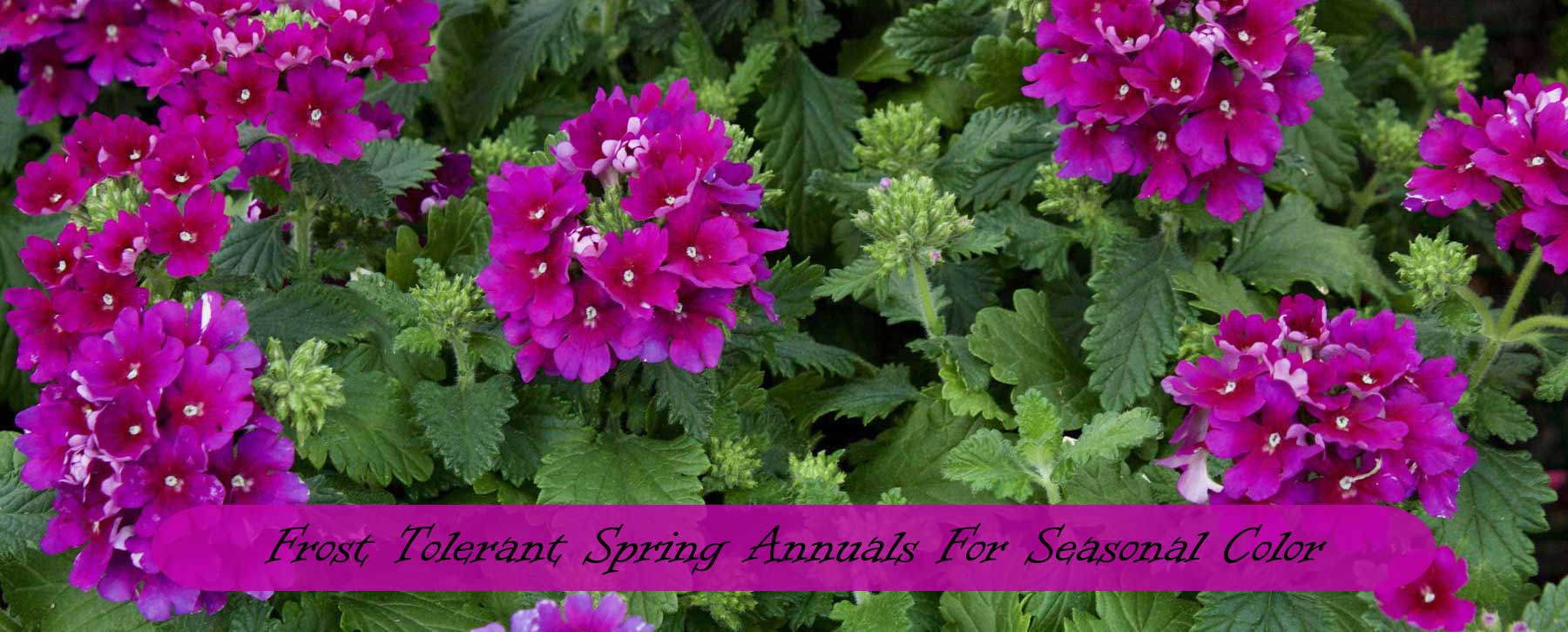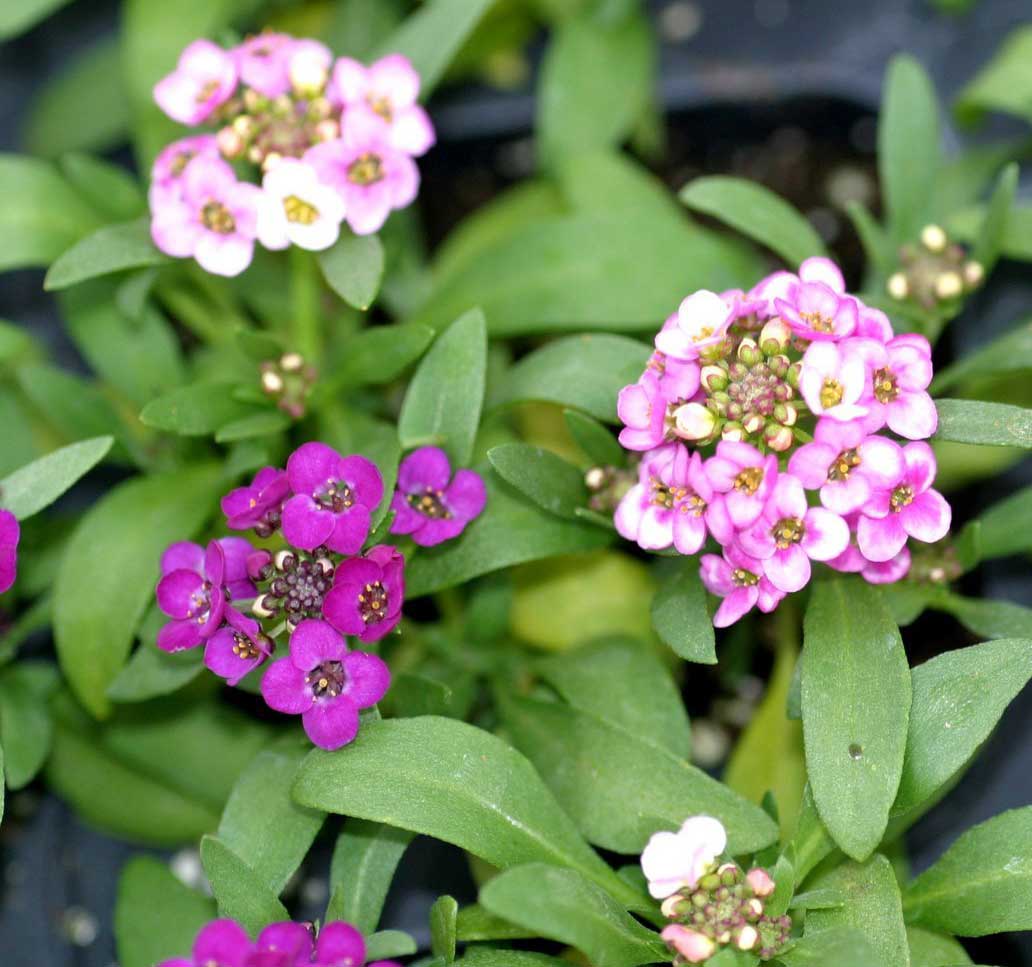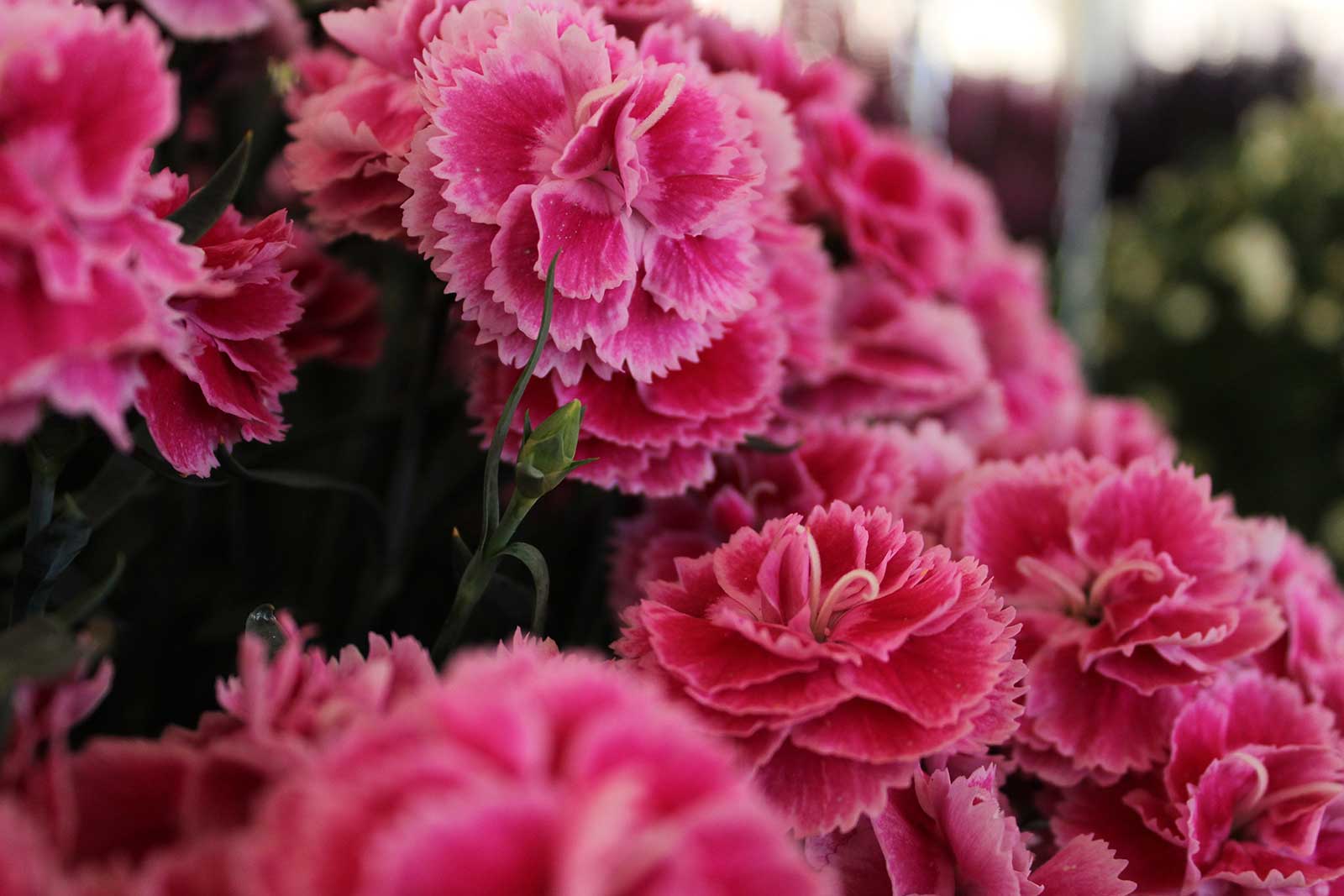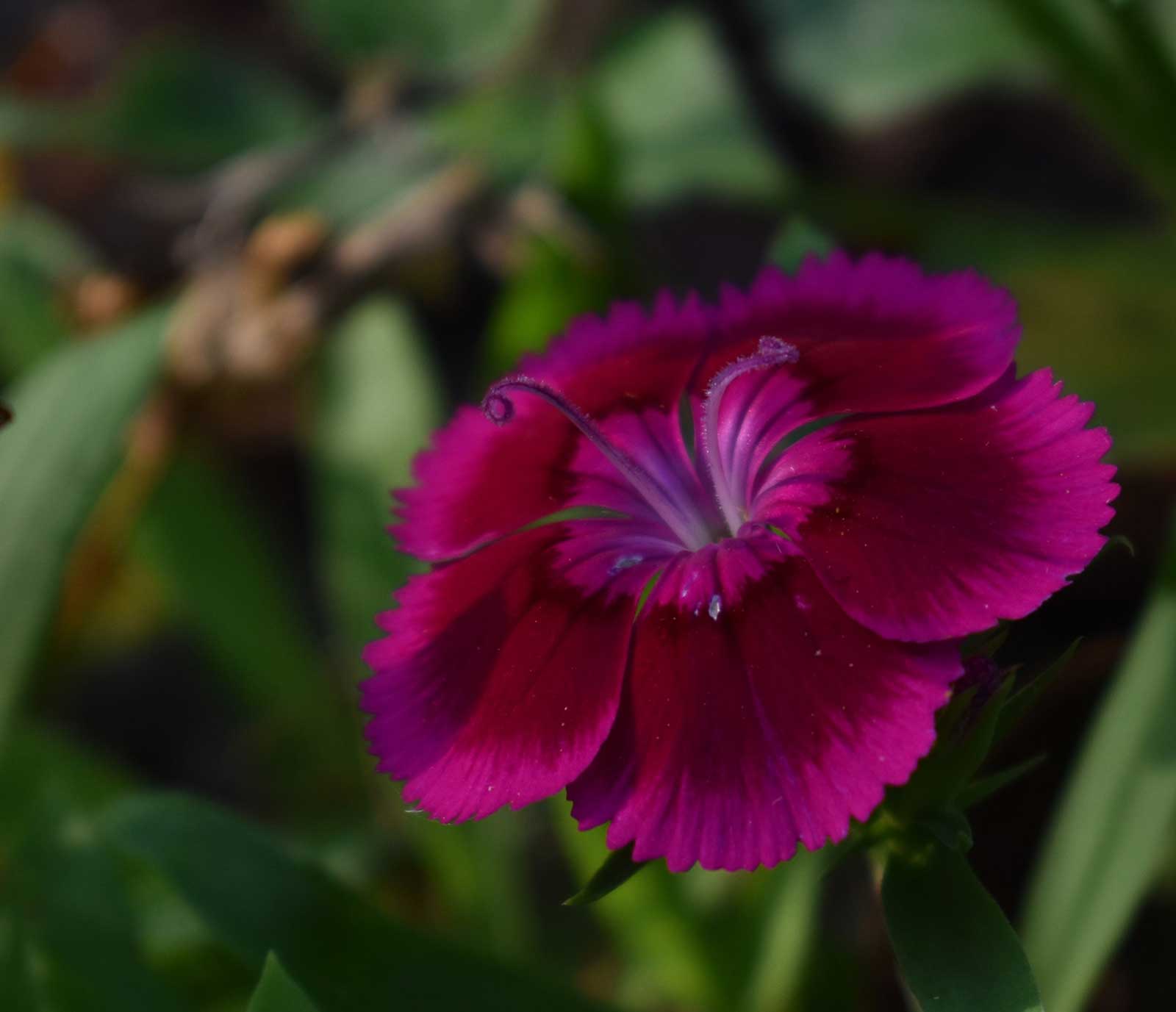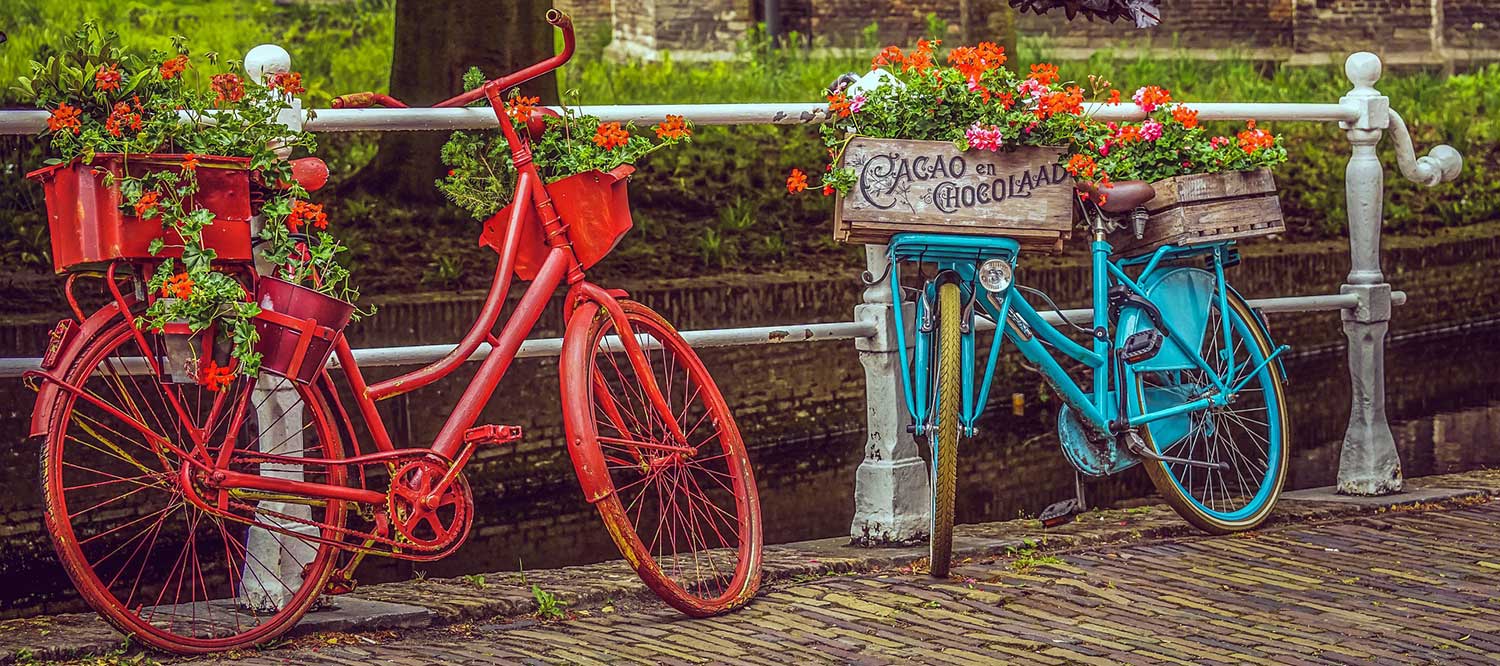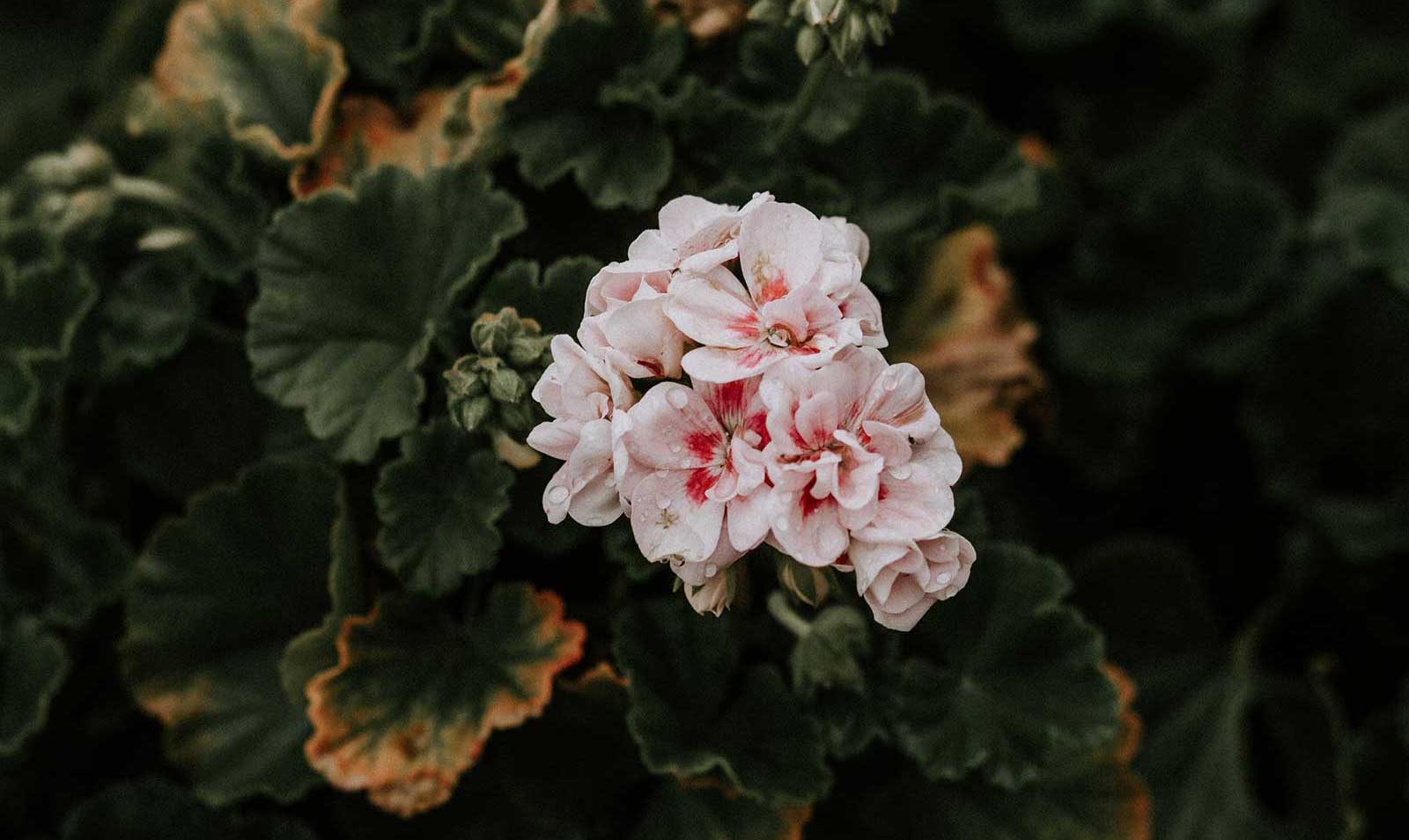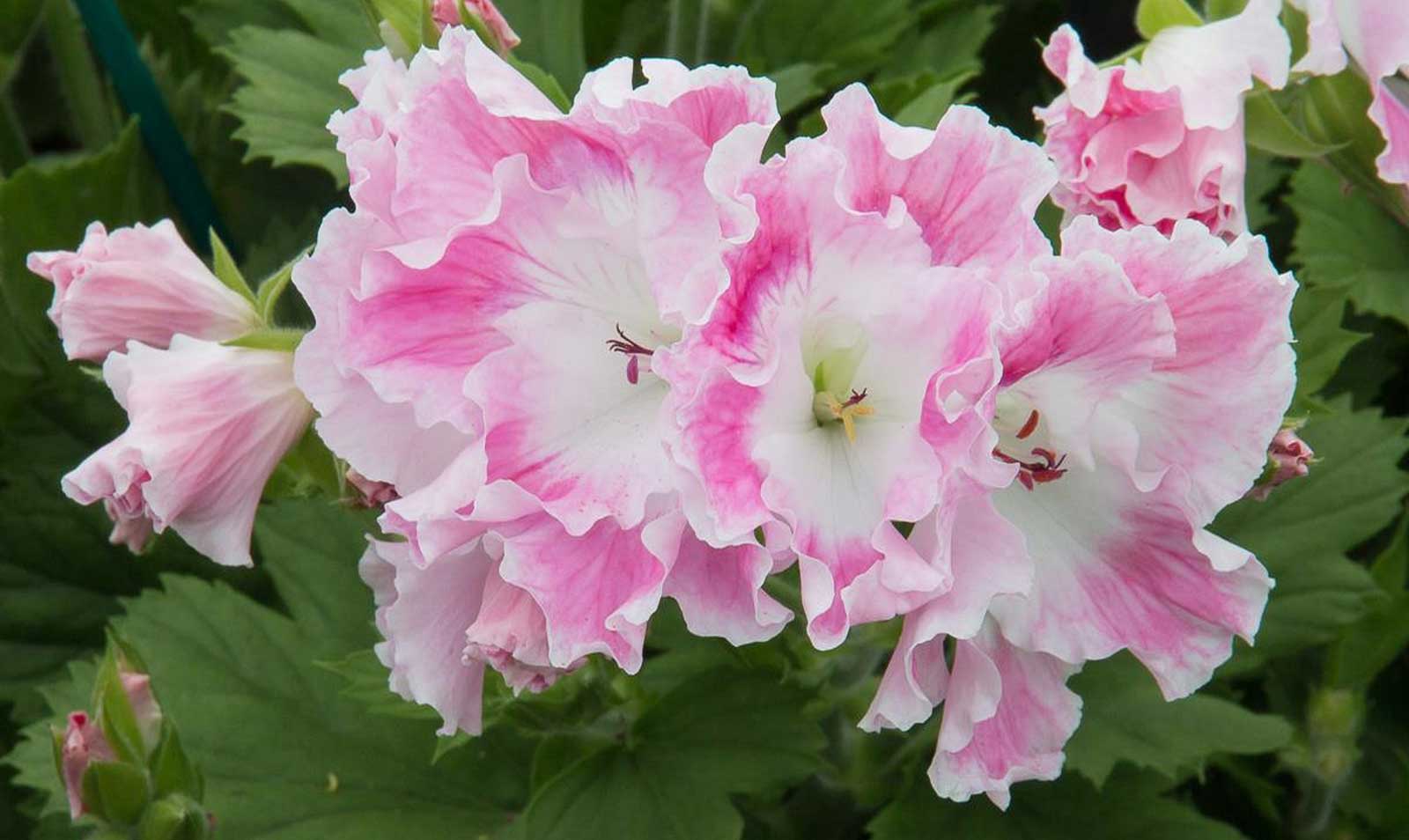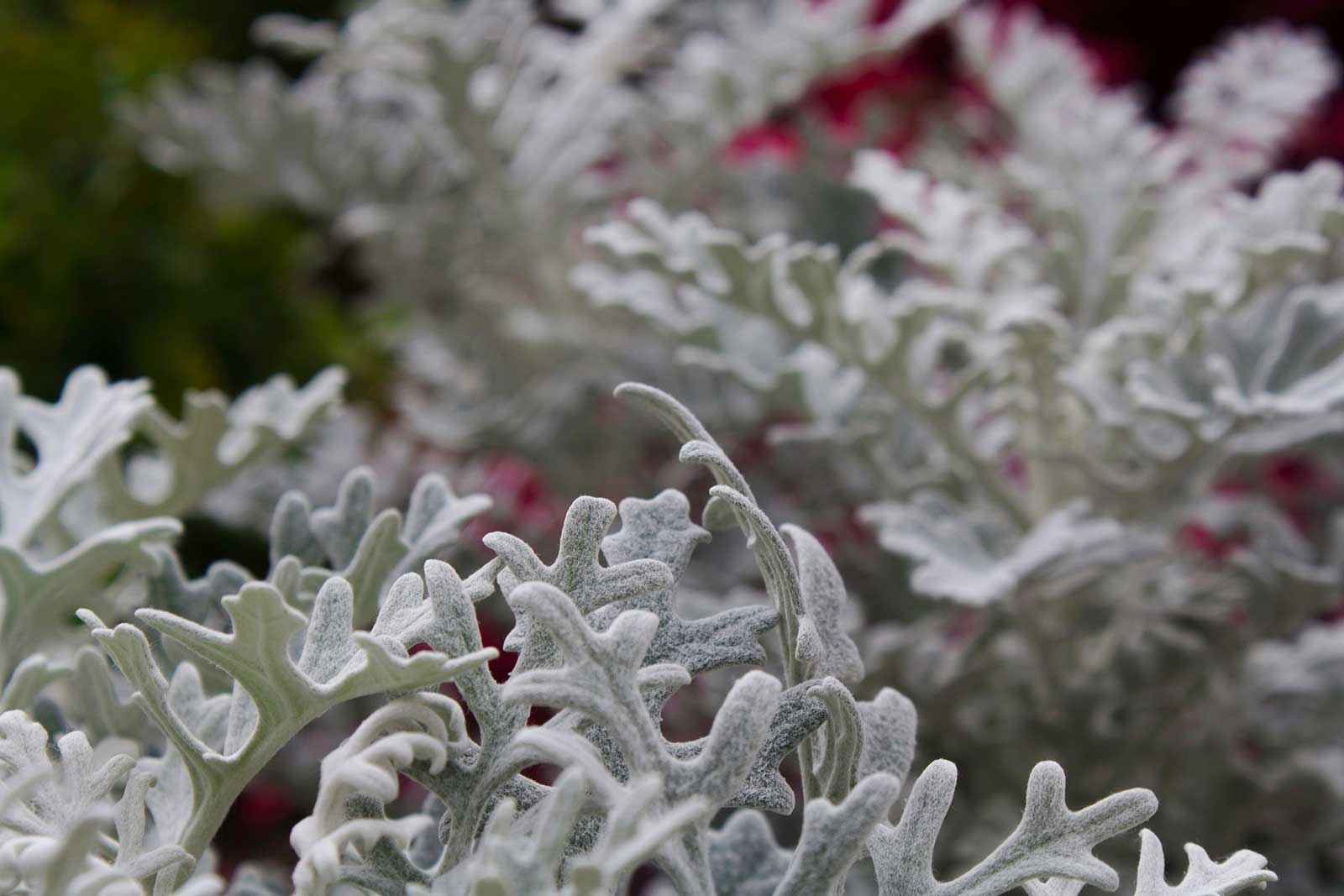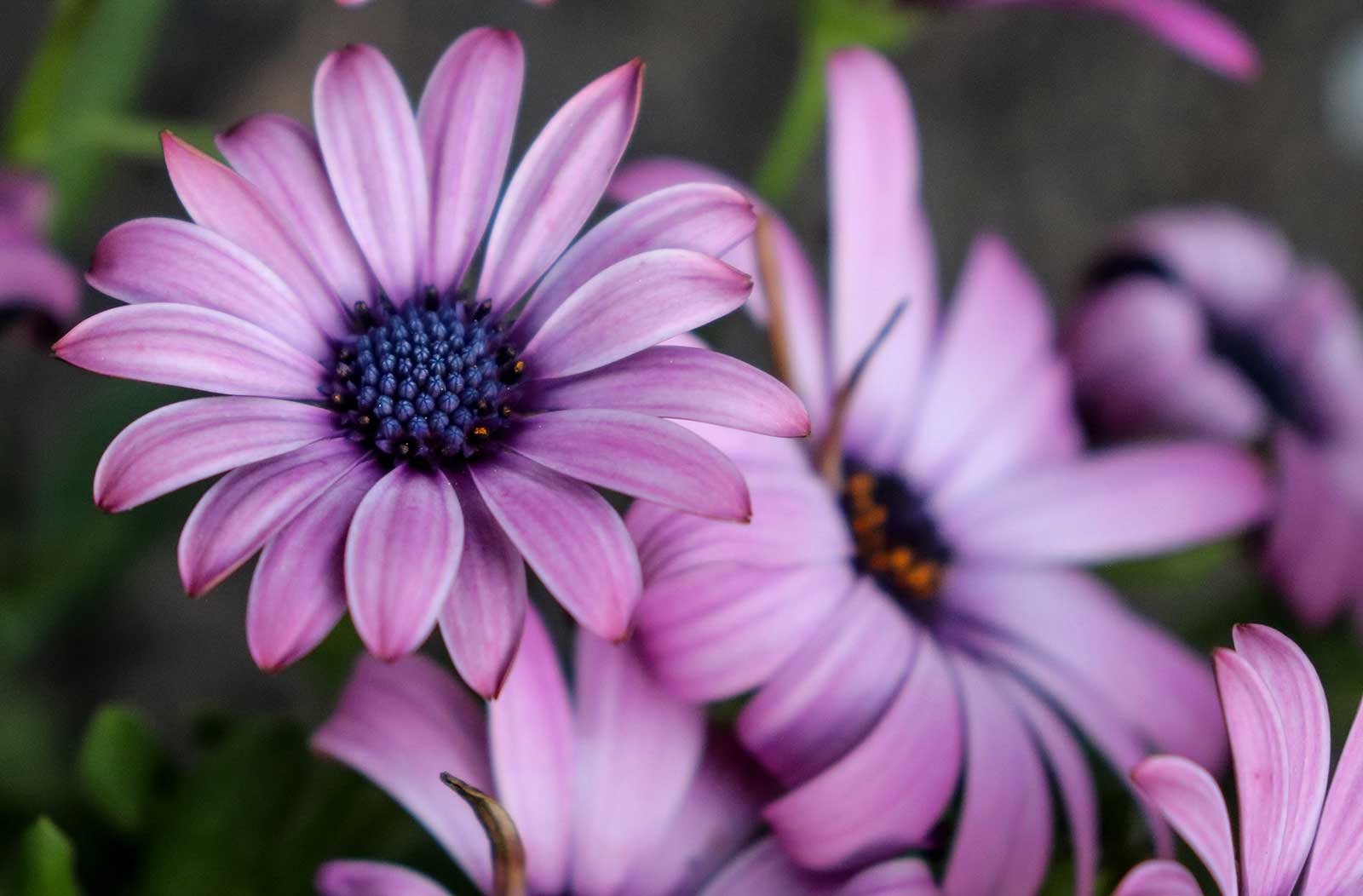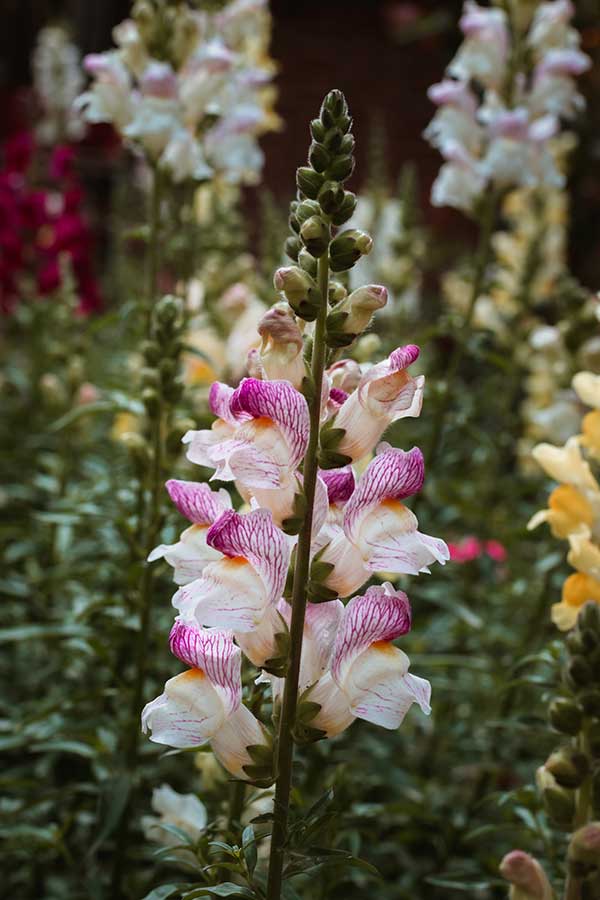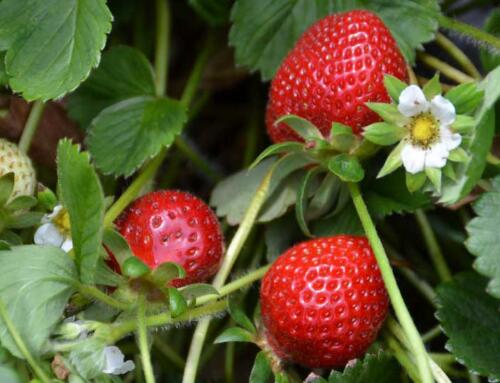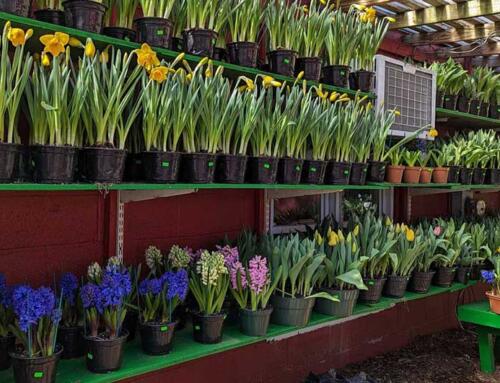FROST HARDY ANNUALS
Early Spring, when the snow melts away off the garden beds and we begin to anticipate planting our favorite seasonal color plants and filling the containers with dazzling displays of Mother Nature reawakening. Be wary though because Jack Frost can still pay a visit to our area, sometimes into mid-May and do his “dirty deeds” to our tender plants. So what’s the solution…
Focus on frost hardy annuals. Some of these annuals that can withstand 20 degrees or so, including pansies, snapdragons, dianthus, alyssum, dusty miller, viola, and osteospermum. Keep in mind that flowers may be a bit ragged after such cold but the plants should make it through ok.
SWEET ALYSSUM – If you are looking for a small statured plant that is less than six inches tall, sweet alyssum is a great option that will spread throughout your garden. This is a sweet-smelling plant that the butterflies and the bees will love. They grow best in full sun and cooler temperatures, which is why they thrive in zones seven through 11.
Sweet alyssum makes an excellent companion plant in the garden. Some plants, when grown together, can boost each other’s growth, fertility, yields, protect them from pests, and attract beneficial insects. Sweet alyssum makes a colorful carpet of tiny flowers that you can use to blanket your garden or landscape.
CALENDULA – This is a plant with bright yellow blooms that may make you think of fall, but it is actually an early spring blooming plant that is easy to care for. This plant, which can grow to be up to two feet tall, prefers temperatures that are a little cool, so in the heat of summer, the blooms will stop growing in zones eight and above.
The herb’s antifungal and antimicrobial properties help prevent infection and heal injuries to body tissues. Calendula is also known to have anti-inflammatory and antioxidant components, which might help to fight cancer, protect against heart disease, and ease muscle fatigue.
Its flowers are edible, and its long use as a cooking herb gives the flower its common name pot marigold. Adding calendula flowers to cooked foods (grains, casseroles, breads, even desserts) gives them a lovely yellow color, Like most herbs, calendulas are adaptable and do not require a lot of maintenance. Roots will often adapt to the space provided. The amazing pot marigold can be grown in containers or beds in full sun to shade conditions. As the calendula prefers cool temperatures, flowers last longer in filtered sun or shady areas.
DIANTHUS – If you are looking for brightly-colored blooms during the early spring, the dianthus is a great plant to consider. Growing up to 10 inches tall, these flowers with pink red and white blooms can be found in zones three through nine. As the temperature rises for the summer months, this plant will take a break from blooming until the temperatures cool back off.
Dianthus flowers (Dianthus spp.) are also called “pinks.” They belong to a family of plants which includes carnations, and are characterized by the spicy fragrance the blooms emit.
The dianthus plant is also called Sweet William (Dianthus barbatus) and has a fragrance with cinnamon or clove notes. The plants are small and usually between 6 and 18 inches (15-46 cm.) tall. Dianthus flowers are most often in pink, salmon, red and white hues. The foliage is slender and sparsely spread on thick stems.
- Blooms in nearly every color, from white to almost black.
- Attracts butterflies and hummingbirds, as well as pollinating insects.
GERANIUM – Pelargonium x domesticum [pe-lar-GO-nee-um] x [doh-MESS-tik-um] is more popularly known as Martha Washington geranium or regal geraniums. This plant stands out in the geranium family, thanks to its striking color pallet and foliage. You can add color to any garden with this bold plant. Considered a fancy leaf geranium, the regal usually has solid green foliage, but it also may have variegated green and white leaves. Producing showy blooms, regal geranium colors include shades of lavender, pink, deep red, purple and white.
Geraniums are often known as a favorite to grow in the summertime, but they are also great plants to grow when the weather is cool. In fact, these durable plants can grow in temperatures as low as 40 degrees Fahrenheit. These plants are recommended for USDA hardiness zones 5 – 10, but the blooms tend to last longer in cooler environments. If you decide to grow the regal geranium outdoors in a garden bed, space the plants at least 8” to 12” inches apart. When growing in a pot, the pot should be at least eight inches in diameter.
Geraniums, one of my favorite container plants, cannot tolerate a freeze, according to the University of Florida. But they can tolerate a light frost if they have had a chance to adjust to cool temperatures.
Senecio cineraria – Dusty Miller – Another annual that can grow in cooler weather is the dusty miller. In most cases, this plant will grow to be six to nine inches tall. The leaves are silver with a powdered look that is designed to survive a lot, which is why this plant is drought resistant and disease resistant. Though this plant does not require high temperature to grow, it does need at least six hours of sun each day. This plant grows best in zone seven through 10, and it will stop blooming when summer arrives. Lacy leaves of the dusty miller plant are attractive companions for many blooms in the garden. Dusty miller care is minimal when the plant is established.
The lacy leaves are resistant to deer and are an excellent choice for areas where browsing animals may create problems with other plants in the landscape. The striking feature of dusty miller plants is its unusual silvery leaves covered in fine hairs. Dusty miller silver wooly leaves are lance-shaped and feature deep lobes or scalloping on the margins, typical of ragwort plants. Leaves grow 3” to 6” (7.5 – 15 cm) long and up to 3” wide. The soft fuzzy, silvery leaves help to retain moisture and make the shrub tolerant of summer heat. The felted appearance of dusty miller leaves disappears when they are wet. Also, leaves may lose their silvery look when growing in the shade.
Osteospermum, is a genus of flowering plants belonging to the Calenduleae, one of the smaller tribes of the sunflower/daisy family Asteraceae. They are known as the daisybushes or African daisies. This plant can create single or double blooms that are blue, purple, or orange. These plants prefer partial shade, and when the temperatures are in the 50s or 60s, they can quickly grow to a height of three feet.
Most osteospermum can tolerate temperatures in the high 30s Fahrenheit with no problems at all. In fact, low temperature is a great tool for controlling the crop. They usually can cope with mild frosts.
Often used as a front of border plant, osteospermums also make great container plants. When in flower an osteospermum attracts scores of pollinators to the garden. At their best with a regular drop of water and some light pruning, the osteospermum brings color and interest to any outdoor space. There are many colours and named cultivars to choose from and the vibrant daisy flowers are good for attracting pollinators. Grow osteospermum in a sheltered spot in well-drained soil in full sun or plant in a container on a sunny patio or windowsill.
SNAP DRAGONS – They can handle a light frost, which is 28 to 32 degrees Fahrenheit, quite successfully. They may even survive a hard freeze, which is 28 F. Both snapdragons and pansies can survive short periods of 20 F weather, but they will probably suffer frost damage. According to Cornell University, snapdragons can be overwintered in zones 5 to 7 with protection in the form of mulching.
Depending on the variety, snapdragons have long been components of cottage gardens and bedding schemes. The long, lance-shaped leaves appear alternately on the stems. Its dramatic flowers are clustered on the top one third to one half of each flower stalk. They are characterized by tubular flowers with large “lips” at the top that form a pouch and bloom in nearly every shade except true blue, which some varieties bearing bi-colored blossoms.
Growing from 8 to 36 inches, snapdragons are usually classified as either dwarf, intermediate or tall varieties, depending on height. Snapdragons also benefit from a 2- to-3-inch layer of organic mulch
One measure of inexpensive protection is to cover and protect your beds during really chilly periods or when harsh winds start to blow. All these frost-hardy annuals can be used in containers set out on decks and patios to brighten up our outdoor living areas, and the containers you can for the most part move to a sheltered area or garage/shed.
We invite you to come out to the nursery to see the huge selection of hardy plants waiting to be planted for an exceptional early burst of color in your garden. These cold-tolerant annuals can be planted outside in early spring or late summer to provide bright colors at a time when more tender annuals can’t survive.

